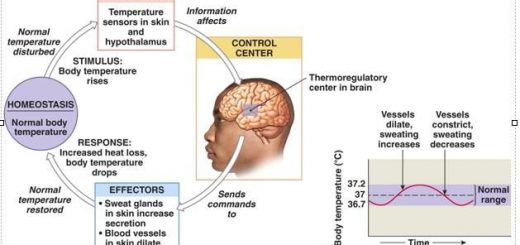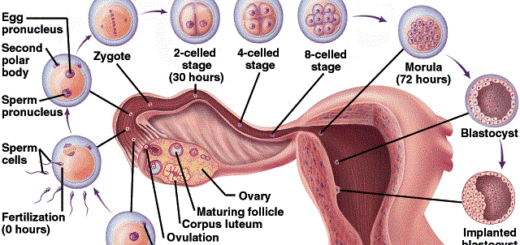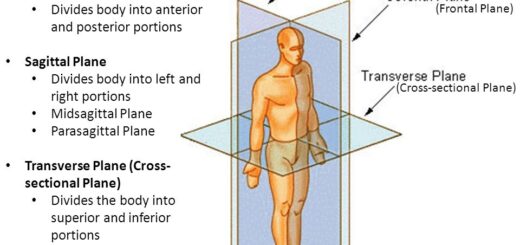Vesicular transport of Macromolecules across the cell membrane, Endocytosis & Exocytosis
Mass transfer of materials through the cell membrane occurs by changes in the plasma membrane at localized sites. It involves 2 processes, endocytosis, and exocytosis. Endocytosis is the process of capturing the substance or the particle from outside the cell by engulfing it with the cell membrane and bringing it into the cell, Exocytosis is the process of vesicles fusing with the plasma membrane & releasing their contents to the outside of the cell, Both endocytosis & exocytosis are active transport processes.
Vesicle Transport
Some particles are too large to pass through the plasma membrane or to move through a transport protein, So the cells use two other active transport processes to move macromolecules (large molecules) into or out of the cell, Vesicles in the cytoplasm can move macromolecules or large particles across the plasma membrane.
There are two types of vesicle transport, endocytosis, and exocytosis, they are active transport processes, and they require energy. Active transport is the energy-requiring process of pumping molecules & ions across membranes against the concentration gradient.
Endocytosis
Endocytosis is the uptake of material, a process by which a cell ingests macromolecules, a particular matter, and other substances from the extracellular space. It is an active process that involves the invagination of the cell membrane to form a membrane-bounded vesicle. In general, 3 mechanisms of endocytosis are recognized in the cell:
Pinocytosis (cell drinking)
It is a non-selective process that occurs in nearly all cell types for the uptake of fluid-containing ions and small protein molecules. The pinocytotic vesicles formed are small and have a smooth surface. This process is most evident in the endothelium of blood vessels.
Receptor-mediated endocytosis
It is a highly selective process resulting in the uptake of specific substances (ligands) by a specific cell that has receptors for these substances e.g. uptake of protein hormones. These receptors are concentrated in specialized regions of the plasma membrane called coated pits (coated by a protein called clathrin).
When a ligand binds specifically to its receptor on the cell surface, clathrin-coated pits invaginate and give rise to small spinous clathrin-coated vesicles containing this ligand. Clathrin coat is rapidly lost and recycled for reuse leaving uncoated endocytotic vesicles, delivered to the lysosomal pathway.
Phagocytosis (cell eating)
It is the ingestion of large solid particles, such as bacteria and cell debris. It is a form of receptor-mediated endocytosis, however, it does not involve the formation of coated pits or vesicles. This activity is confined to special types of cells, the phagocytes which have receptors on their surfaces that recognize and bind the foreign particles e.g. tissue macrophages.
The binding of the receptor and foreign body results in the extension of the cell membrane to form pseudopodia that engulf the particle. This is followed by the fusion of the membrane to internalize the particle into the cytoplasm forming a membrane-bounded phagosome. The contents of the phagosome are then digested inside the cell through the lysosomal pathway.
Exocytosis
Exocytosis means the release of cell products into the extracellular compartment. During this process, a vesicle moves from the cytoplasm to the cell membrane, fuses with it, and discharges its content. There are 2 general pathways of exocytosis: Regulated secretion (stimulus-dependent) and Constitutive secretion.
Regulated secretion (stimulus-dependent):
- The secondary products become concentrated and stored forming membrane-bounded secretory granules.
- As a result of a stimulus (hormonal or neural stimulus), these vesicles move to the surface and fuse with the cell membrane to pour their contents outside the cell.
- Regulated exocytosis occurs during the release of the digestive enzymes by the acinar cells of the pancreas.
Constitutive secretion
- The secretory products leave the cell immediately after their synthesis. These cells lack secretory granules.
- The secretion is released continuously through secretory vesicles that fuse with the plasma membrane.
- Constitutive exocytosis occurs during the release of antibodies by plasma cells.
Membrane recycling
During the vesicular transport, the cell membrane is maintained, the excess membrane added to the cell membrane by exocytosis is constantly recycled again into the cytoplasmic compartments by endocytosis.
Histology, Molecular structure of the cell membrane, Cell function & structure
Types of Transport through cell membranes, Active transport, Simple & Facilitated diffusion
Body fluid exchange, The electrical characteristic of the cells, Osmosis & Filtration
Cytoplasmic organelles, Ribosomes & Endoplasmic reticulum function, structure & definition
Parts of cell & How can the cell perform its functions?
Non-membranous organelles and membranous organelles in the cytoplasm



